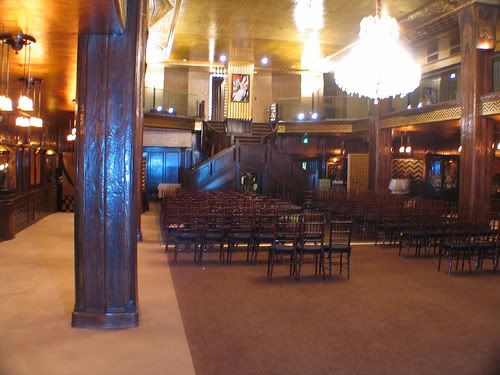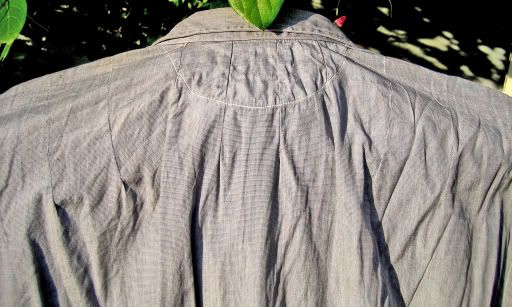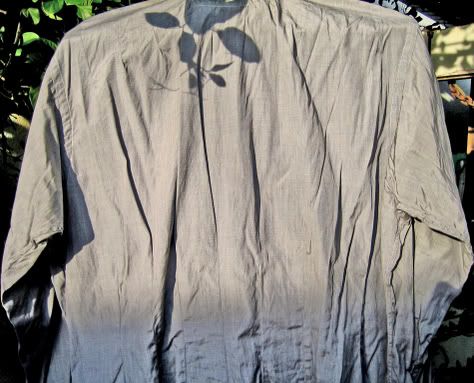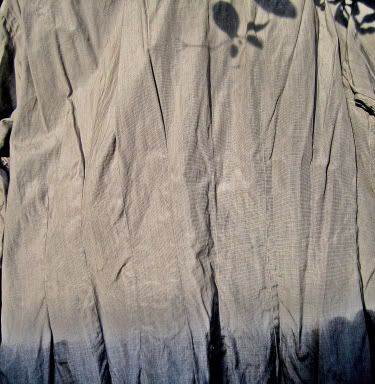Marc Chevalier
Gone Home
- Messages
- 18,192
- Location
- Los Feliz, Los Angeles, California
Below are photos of Golden Era menswear from what was (probably) America's finest haberdasher at that time: the late, great OVIATT'S. The Oviatt menswear building is now a restaurant called Cicada. Here is a photo of it; you can get an idea of what this store was like in its heyday, the '20s and '30s:

What was OVIATT'S? Why was it so special? Here's a brief history:
------------------------------------------------------------------------------------------------------------------------------
In 1906, at the age of 18, the talented and ambitious James Oviatt left his native Salt Lake City for Los Angeles, where he began a career in haberdashery at Desmond's Department Store.
After rising rapidly through Desmond's ranks, he opened an exclusive men's shop with business partner Frank Alexander in 1911. Their goods were so supremely elegant that the clientele of Alexander and Oviatt became a veritable Who's Who of Los Angeles celebrities and socialites.
In 1925, on one of his many trips to Paris in search of fine fabrics, Oviatt attended the landmark Exposition Internationale des Arts Decoratifs et Industriels Modernes (from which the term Art Deco was derived). Instantly captivated by the beauty of Art Deco, Oviatt commissioned the leading European designers and craftsmen, including renowned jeweler and art-glass designer Rene Lalique, to ornament a magnificent building that would be the new home of Alexander and Oviatt.
The Oviatt Building, erected in 1927, was the first Art Deco building in Los Angeles. Designed by Albert Walker and Percy Eisen, it was lavishly embellished with French marble and more than 30 tons of Lalique's art glass -- the largest shipment of its kind ever to pass through the Panama Canal.
The Penthouse, created for Oviatt's own use, was outfitted with Lalique's custom lighting treatments and exquisite floors and cabinetry by the celebrated French firm Saddier et Fils. It was recognized as a masterpiece from the moment of its completion. The splendor of the interior was matched by the bi-level rooftop gardens, which boasted a swimming pool, tennis court, putting green, clock tower, and "beach" of imported Riviera sand.
Hailed by Oviatt's contemporaries as "a castle in the air", the Penthouse was the site of legendary parties for decades. Oviatt and his wife Mary entertained lavishly, and signed photographs of their friends and clients -- including John Barrymore, Errol Flynn, Leslie Howard, Charles Boyer and Howard Hughes -- still grace the Penthouse walls.
By 1969 the era of Alexander and Oviatt was over. The haberdashery closed, but the Oviatts continued to occupy the Penthouse until their deaths in the early 1970s.
-------------------------------------------------------------------------------------------------------------------------------
My good friend Ben McGinty has a collection of apparel from OVIATT'S. Nearly all of Ben's pieces below came from the L.A. estate of Mr. J. E. Hare, who achieved great success as a racetrack bookie and gambler in the '20s and '30s. Take a look:
Here's a suit from the early 1950s. Note the double lapel buttonholes and the trousers' built-in belt (with a leather buckle):







What was OVIATT'S? Why was it so special? Here's a brief history:
------------------------------------------------------------------------------------------------------------------------------
In 1906, at the age of 18, the talented and ambitious James Oviatt left his native Salt Lake City for Los Angeles, where he began a career in haberdashery at Desmond's Department Store.
After rising rapidly through Desmond's ranks, he opened an exclusive men's shop with business partner Frank Alexander in 1911. Their goods were so supremely elegant that the clientele of Alexander and Oviatt became a veritable Who's Who of Los Angeles celebrities and socialites.
In 1925, on one of his many trips to Paris in search of fine fabrics, Oviatt attended the landmark Exposition Internationale des Arts Decoratifs et Industriels Modernes (from which the term Art Deco was derived). Instantly captivated by the beauty of Art Deco, Oviatt commissioned the leading European designers and craftsmen, including renowned jeweler and art-glass designer Rene Lalique, to ornament a magnificent building that would be the new home of Alexander and Oviatt.
The Oviatt Building, erected in 1927, was the first Art Deco building in Los Angeles. Designed by Albert Walker and Percy Eisen, it was lavishly embellished with French marble and more than 30 tons of Lalique's art glass -- the largest shipment of its kind ever to pass through the Panama Canal.
The Penthouse, created for Oviatt's own use, was outfitted with Lalique's custom lighting treatments and exquisite floors and cabinetry by the celebrated French firm Saddier et Fils. It was recognized as a masterpiece from the moment of its completion. The splendor of the interior was matched by the bi-level rooftop gardens, which boasted a swimming pool, tennis court, putting green, clock tower, and "beach" of imported Riviera sand.
Hailed by Oviatt's contemporaries as "a castle in the air", the Penthouse was the site of legendary parties for decades. Oviatt and his wife Mary entertained lavishly, and signed photographs of their friends and clients -- including John Barrymore, Errol Flynn, Leslie Howard, Charles Boyer and Howard Hughes -- still grace the Penthouse walls.
By 1969 the era of Alexander and Oviatt was over. The haberdashery closed, but the Oviatts continued to occupy the Penthouse until their deaths in the early 1970s.
-------------------------------------------------------------------------------------------------------------------------------
My good friend Ben McGinty has a collection of apparel from OVIATT'S. Nearly all of Ben's pieces below came from the L.A. estate of Mr. J. E. Hare, who achieved great success as a racetrack bookie and gambler in the '20s and '30s. Take a look:
Here's a suit from the early 1950s. Note the double lapel buttonholes and the trousers' built-in belt (with a leather buckle):























































